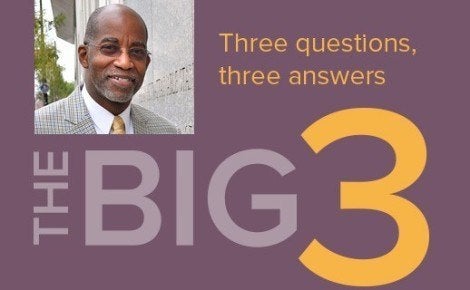August 12, 2015 — Eliminating racial and ethnic disparities in health in the U.S. isn’t just the job of the health care sector—it’s the job of society as a whole, argues David R. Williams, Florence Sprague Norman and Laura Smart Norman Professor of Public Health.
In a viewpoint article published August 11, 2015 in JAMA (Journal of the American Medical Association), co-authored with Ronald Wyatt of The Joint Commission, you discussed how unconscious racial bias on the part of health care professionals contributes to deficits in the quality of care given to nonwhites. Can you offer examples of how this bias impacts care?
Negative beliefs about race are deeply ingrained in U.S. culture, and popular culture continues to devalue blacks and other nonwhites. For instance, research has shown that greater exposure to TV shows that portray black people negatively is linked with higher levels of racial prejudice. Other research has shown that, in many widely read books and newspapers, the word “black” is most frequently paired with words like “poor,” “violent,” “religious,” “lazy,” “cheerful,” and “dangerous.” The word “white,” on the other hand, is most often linked with words such as “wealthy,” “progressive,” “conventional,” “stubborn,” “successful,” and “educated.” People absorb these sorts of messages and develop unconscious biases that favor whites over blacks. This happens even among people who believe in racial equality. Clinicians are no exception. Previous studies have shown, for instance, that higher levels of implicit bias among clinicians is linked with biased treatment recommendations for black patients, as well as poorer quality patient-doctor communication and lower ratings by patients from racial or ethnic minority groups about the quality of their encounters with doctors.
The article also noted that low socioeconomic status contributes to the health disparities faced by blacks and other nonwhites. What are some of the major ways that these two problems are connected?
Blacks, American Indians, Native Hawaiians and other Pacific Islanders, low socioeconomic status Asian communities, and Latinos born in the U.S. all fall into an unfortunate category—compared with whites, they face illnesses earlier, experience illnesses more severely, deal with more rapid progression of illnesses, and suffer higher rates of impairment and death. Many of these problems start before they even approach the health care system for help. That’s because their socioeconomic status puts them at a disadvantage. In 2013, for every household income dollar earned by whites, Hispanics earned 70 cents and blacks just 59 cents. These economic disparities affect where people live, learn, work, play, and worship—and all of these factors can in turn impact health. For instance, if blacks or other nonwhites can only afford to live in poorer neighborhoods, they may face greater exposure to toxic chemicals, or have limited access to health care or healthy foods.
What about the role of stress—either from dealing personally with racial bias, or from hearing about tragedies such as the racially motivated killings in a black church in Charleston, South Carolina, or recent killings of unarmed black men by law enforcement?
Stress certainly plays a huge part. We know that high levels of psychosocial stress can have serious health consequences—such as high blood pressure, asthma, obesity, cancer, and death, as well as damaging behaviors, such as poor sleep, smoking, and substance abuse. Such stress has been linked with facing racial discrimination—or even the threat of racial discrimination—on a regular basis, in everything from employment to getting a bank loan to hailing a taxi. Certainly the recent tragic events in the news would only serve to heighten individuals’ existing stress levels.
To lessen the negative health impacts of our nation’s undercurrent of racial bias, we can work on several fronts. We can train our health care workers about the prevalence of disparities in health and health care. We can implement policies and interventions in homes, schools, neighborhoods, workplaces, and religious organizations aimed at promoting equality and encouraging healthy choices by individuals. Beyond that, there’s a larger goal, of course—to dismantle racial bias not just in health care and in health, but wherever it exists in society.
Read more
